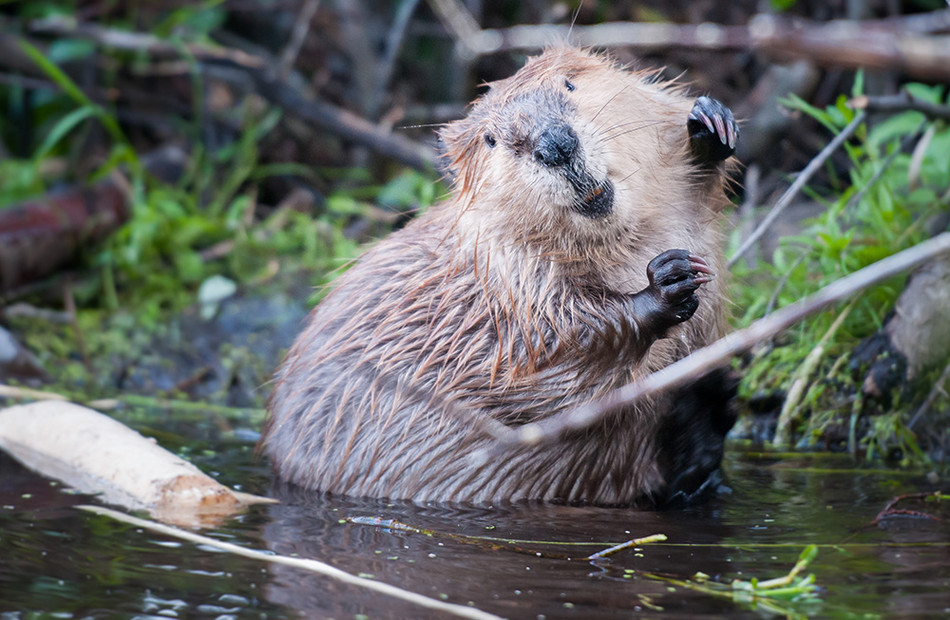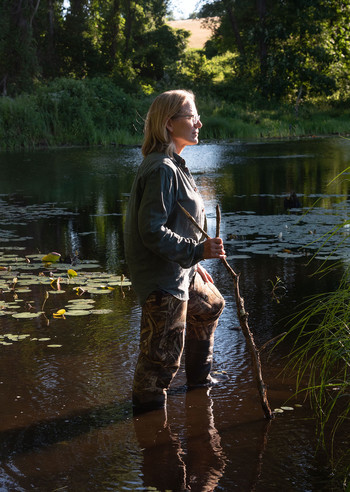Why write a book on beavers?
I fell for beavers serendipitously. I was walking in the woods and heard a crack and realized it was a beaver slamming its tail against the water. The beaver had just made a new pond near my house in rural Connecticut. One day the area was a dried-out swamp, another it was gleaming with silver water. I was hooked and began a long journey to learn more about these animals.
What did you find out?
Beavers are the only creatures other than humans to create the habitat they need to survive. They move to a creek or stream, dam it up, and cause it to swell with water. At one point, four hundred million beavers populated every watershed in America, shaping the river systems that pulsed water through the continent. They also helped launch the North American economy — it was the lust for beaver pelts that jumpstarted transatlantic trade. In fact, the first American multimillionaire, John Jacob Astor, initially made his fortune trading beaver pelts.
I learned that the story of beavers is a tragic one of overextracting resources. Through the millennia, beavers kept the nation’s hydrology functioning, but in a mere three hundred years, the fur trade nearly wiped them out; a lot of our problems with water today are the result of devastated river systems and wetlands. But beavers also represent one of the greatest conservation comeback stories of the twentieth century.
How do beavers help the environment?
The average beaver pond contains a million gallons of water and three times as much underneath, absorbed by the ground like a sponge. That sponge is there in times of drought to restore water to the stream network, and it absorbs floodwaters. It also acts like a giant coffee filter as water seeps into the aquifer: scientists call wetlands the kidneys of the river system, because they cleanse water not just of sediment but of pollutants like nitrogen and phosphorous, which can cause toxic algae growth.
Beaver ponds are also rich soups of biodiversity, full of microorganisms that attract species from insects to migrating birds. We should be thinking of these ecosystems as just as important to the larger ecology as coral reefs.
How are beavers being put to work in the fight against climate change and other environmental problems?
It’s no exaggeration to call beavers a North American climate-action plan. In California, there’s a group working to restore beavers into watersheds, in large part because the ponds they create can act as natural speed bumps to wildfires. In Milwaukee, the sewage department conducted a study with the University of Wisconsin and found that in twenty-five years, restocking beavers in the upper watershed of the Milwaukee River could result in the storage of 1.7 trillion gallons of stormwater annually. Recruiting beavers is much more cost-effective than building dikes or concrete water-storage tanks.
Beavers are often considered pests. How can we live more harmoniously with them?
Beavers definitely need a rebrand! It’s true that they want to live where humans live, which is low-lying areas near rivers and streams. But there are increasingly sophisticated methods for learning how to coexist. If you live near a beaver pond and it’s flooding a road, you can install a device like a pond leveler or culvert diversion fence. You can also coat trees with sand-based paint to prevent beavers from cutting them down. The Beaver Institute, based in Massachusetts, has tips for dealing with the animals on its website, and the organization is working on building a national network of trained people who can respond to beaver problems.
But ultimately I think we need to reset our relationship with the natural world. We can’t go on thinking of nature as a vending machine.
Beavers still feel like a niche topic. Have you been surprised by your book’s positive reception?
I’m not surprised, because it’s such a story of our times. I realized while writing Beaverland that all along there was an environmental solution in this rodent that nearly everyone disregarded. It left me thinking, what else have we overlooked? What else will we find if we look more closely, with humility and attention, right where we live? In New York City, you have nature-based solutions like the Billion Oyster Project, which is helping to restore the New York Harbor, and red mussels are being used to clean up the polluted Gowanus Canal. The natural world is so amazing and resilient. Once you realize you are not above it or apart from it, you can be part of that strength too.




